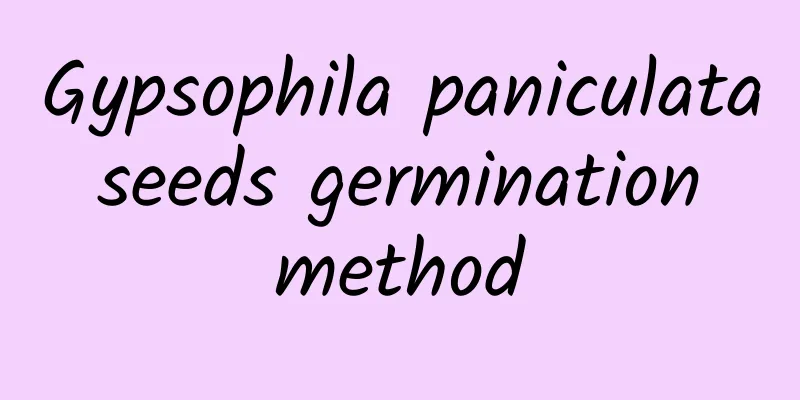The whole process of corn cob cultivation technology for oyster mushrooms (corn cob raw material cultivation of oyster mushrooms)

Technology of growing oyster mushrooms on corn cobsThere are three types of edible fungus cultivation materials: cooked materials, raw materials, and fermented materials, and fermented materials are more commonly used. Fermented materials are generally fermented by stacking, and the main steps include: Prepare the ingredientsSelect fresh, mold-free corn cobs, dry them in the sun and crush them into corn-sized particles. Then, mix corn cobs, quicklime, bran, and nitrogen, phosphorus, and potassium compound fertilizer in a ratio of 80%, 4%, 15%, and 1%. After the raw materials are evenly mixed, mix them in a water-to-material ratio of 2:1 to fully moisten the raw materials. Cultivation material stacking and fermentationThe mixed culture material is piled up for fermentation, which usually takes 12 hours to 1 day. During the fermentation, when the temperature reaches above 60℃, the pile is turned from top to bottom and from inside to outside for 2 to 3 times to ensure that the raw materials are fermented evenly. When white hyphae appear on the surface of the culture material, the fermentation is complete. Bag inoculationBefore inoculation, ensure that the temperature of the culture medium drops to around 30°C to avoid excessive temperature that would burn the fungus. During inoculation, ensure that the mycelium grows throughout the entire bag. Generally, the first layer is filled with bacteria, the second layer is the culture medium, and then another layer of bacteria is added, and finally sealed. Before putting the packed bags into the greenhouse, the inside of the greenhouse should be disinfected to avoid contamination by miscellaneous bacteria. Post-managementAfter the mycelium is fully grown, the temperature and air humidity in the greenhouse should be well controlled. Generally, the temperature should be controlled at around 20℃, ventilation should be maintained, and the humidity should be controlled at around 90%. After the mushrooms have grown, nutrient solution can be sprayed to promote the growth of oyster mushrooms, shorten the mushroom picking time, and maintain proper light. Precautions when using corn cobs as cultivation materials①Increase the amount of vaccination Corn cobs have a high sugar content and are easy to ferment and breed other bacteria during the cultivation of Oyster Mushroom. Therefore, the inoculation amount should be increased to ensure that the mycelium can grow all over the bag and prevent the growth of other bacteria. ②Keep ventilation Keep the greenhouse ventilated and disinfect it regularly to avoid over-high temperature. Do not place the mushroom bags too close together. Generally, place them in 2 layers to avoid over-high temperature or lack of ventilation. Especially in the fruiting stage, high temperature can easily breed bacteria, causing the mushroom to become sick, affecting the yield and quality. ③ Regular inspection Check the growth of the mushroom bags regularly, detect and clean out the diseased or infected bags in time to avoid contaminating other bags. ④Control the harvesting time Generally, oyster mushrooms can be harvested when they are 80% mature. After harvesting, make sure to clean the greenhouse to avoid the growth of bacteria. |
Recommend
Learn these 3 tricks, and your bougainvillea tree will be full of 100 flowers!
Bougainvillea lacks light, has few flowers and sp...
Will the sweet-scented osmanthus tree die if its trunk is sawed off?
1. You won’t die Even if the trunk of an osmanthu...
Orange Rose Flower Language
Flower Language The flower language of orange ros...
Advantages and disadvantages of Songzhimeng Rose
The pedicels of the Songzhimeng rose are thick an...
The meaning of Wutong
1. Noble character In ancient poetry, the paulown...
Cultivation method of potted iron tree
1. Lighting conditions It is extremely light-lovi...
The reason why the leaves of the big-leafed green radish droop
1. Wrong lighting If the plant's leaves are s...
How to sow moss phlox
How to sow moss phlox sowing Before sowing, the s...
Causes and treatments of yellow leaves of Staghorn Begonia
1. Unsuitable soil 1. Reason: Staghorn Begonia gr...
What flower represents first love?
Flowers that represent "first love" Pur...
Breeding methods and precautions of Qingshengjin
1. Maintenance methods 1. Temperature: It has rel...
Sunflower Growth Conditions and Characteristics
Sunflower Growing Conditions Sunflowers prefer a ...
How to raise goldfinch
1. Breeding environment 1. Light: Goldfinch likes...
What to do if dragon fruit cannot be exposed to the sun? How to remedy sunburn
1. What to do Dragon fruit is a sun-loving plant ...
How to grow ice lantern jade in winter
About Lighting Succulent plants are not suitable ...









